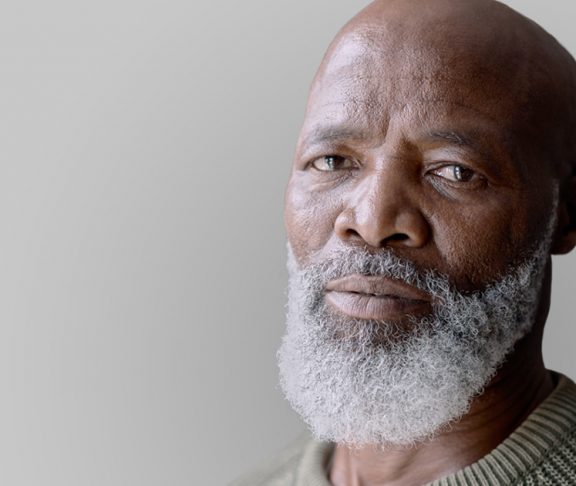
Dr Kevin Gruffydd-Jones
GP in Box with a specialist interest in Respiratory, Joint Clinical Policy Lead, Primary Care Respiratory Society

Professor John Hurst
Professor of Respiratory Medicine, University College London and Consultant Physician, Royal Free Hospital
New Patient Charter outlines action needed to tackle COPD, the Cinderella disease that claims 30,000 lives a year.1
COPD is the fifth leading cause of death in the UK, causing 30,000 deaths every year.1 More needs to be done to increase awareness.
Why is reform needed?
“In the 20 years since I became interested in chronic obstructive pulmonary disease (COPD), it remains a Cinderella disease. The main, but by no means only, cause is smoking, leading to a stigma associated with COPD,” says Dr Kevin Gruffydd-Jones, a GP who co-authored the Patient Charter.
COPD affects 1.2 million people in the UK,2 is the second largest cause of emergency admission,1 and costs the NHS £1.9 billion a year.3 One in eight emergency hospital admissions is for COPD and ~30% patients are readmitted within 90 days.1
With early diagnosis and proactive treatment, the burden can potentially be reduced.
People with COPD are three times more likely to die if they are hospitalised with COVID-19.
Barriers to optimal care
The name: “People do not know what COPD stands for, let alone what it is. Many assume they have a smoker’s cough and nothing can be done.”
The stigma is a barrier to reporting and treatment. “Many patients believe their condition will be perceived as “their own fault” leading to low treatment expectations. People delay seeking a diagnosis, resulting in hospital admissions after experiencing an exacerbation (also called ‘flare ups’).”
Adherence to guidelines: “We have pretty good treatment guidelines, but lack of awareness and confusion means they are not always followed” he says. “Many practitioners treat patients’ symptoms but are less aware of the need to prevent harmful exacerbations.”
Access to therapy: “Pulmonary rehabilitation is not available everywhere, even though it is known to reduce hospital admissions.”4
Expertise: “Often patients are reviewed by clinicians without specialist respiratory expertise. For example patients admitted to hospital with COPD are 14% more likely to die than those not reviewed by a respiratory specialist within 24 hours.”5
The principles of the Patient Charter include:
- Timely diagnosis and assessment of COPD
- Understanding what a COPD diagnosis means
- Access to personalised treatment
- Review management plans to prevent exacerbations
- Access to specialist care
- Reducing stigma
“This is all particularly important now,” he says. “People with COPD are three times more likely to die if they are hospitalised with COVID-19.”6
Professor John Hurst, at the Royal Free highlights: “At a time when the NHS is experiencing increased pressure, it has never been more important to optimise the care of people living with COPD helping them to stay out of hospital and living well.”
The future of COPD care
Hurst says: “The Charter will empower people to know what good care looks like, to know what to ask for when care falls short.” Gruffydd-Jones adds: “Collaboration between patients, practitioners and policymakers will prevent needless suffering, hospitalisation and deaths. Working together, we can transform COPD care.”
The Charter was created and funded by AstraZeneca in partnership with GAAPP
This article has been developed and written by AstraZeneca
GB-25430 I November 2020
References:
1 NICE. QS10. Health and social care directorate. Quality standards and indicators – Chronic obstructive pulmonary disease (COPD) update. May 2015. Available at: https://www.nice.org.uk/guidance/qs10/documents/briefing-paper (accessed November 2020) | 2 British Lung Foundation. Chronic Obstructive Pulmonary Disease (COPD) Statistics. Available at: https://statistics.blf.org.uk/copd (accessed November 2020) | 3 British Lung Foundation. The battle for breath – Estimating the economic burden of respiratory illness in the UK. Available at: https://www.blf.org.uk/policy/economic-burden (accessed November 2020) | 4 Kjaergaard J et al. Chronic obstructive pulmonary disease. Adherence to early pulmonary rehabilitation after COPD exacerbation and risk of hospital readmission: a secondary analysis of the COPD-EXA-REHAB study. BMJ Open Respiratory Research. Chronic obstructive pulmonary disease 2020. Available at: http://dx.doi.org/10.1136/bmjresp-2020-000582 (accessed November 2020) | 5 Royal College of Physicians. National Asthma and COPD Audit Programme (NACAP): COPD Clinical Audit 2017/2018. May 2019. Available at: https://www.rcplondon.ac.uk/projects/outputs/national-asthma-and-copd-audit-programme-nacap-copd-clinical-audit-201718 (accessed November 2020) | 6 Venkata V and Kiernan G. Covid-19 and COPD: pooled analysis of observational studies. J Chest. October 2020. V158:4. PA2469. Available at: https://doi.org/10.1016/j.chest.2020.09.046 (accessed November 2020) |



